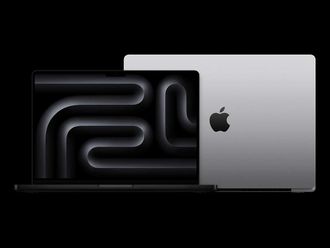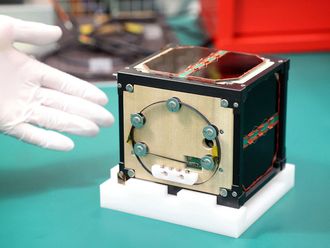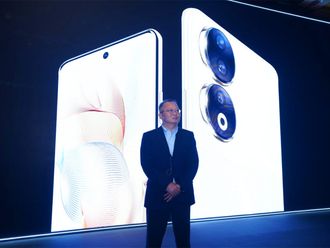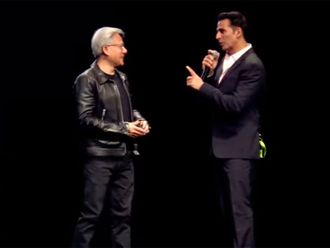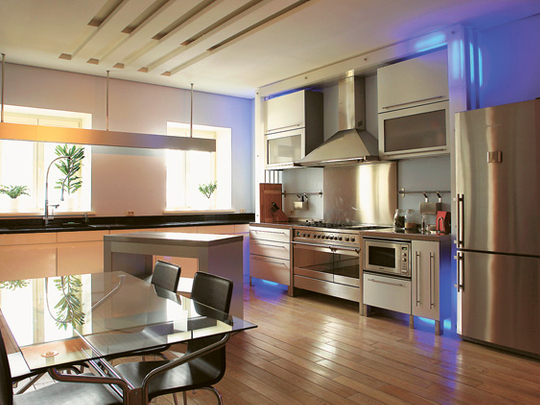
The home kitchen has come a long way. Today's kitchen is a completely transformed room from what it used to be in terms of design and function. A middle-class family home boasts more conveniences than our ancestors could ever dream of.
Imagine having to slave over a hot charcoal fire daily, or having to store food in wooden cupboards, knowing that it would not last very long. Derived from the Latin word "to cook", the kitchen has made a long and interesting journey through time.
Days of antiquity: In ancient Greece, a central courtyard dominated events in households. The womenfolk of the house spent their days in these open patios cooking meals for their families. Food and utensils were stored in small rooms. Wealthy Roman citizens possessed relatively well-equipped kitchens compared to the common man (or woman), who had to do their cooking in large public kitchens.
Through medieval times: Architectural advances during the Middle Ages did not make a huge impact on the way kitchens functioned. Between the 10th and the 12th centuries, medieval kitchens around Europe were known to be sooty and smoky.
There was nothing remotely attractive about the cooking in these stifling rooms, so kitchens were tucked away not to be seen by the genteel folk. Castles and monasteries had a separate kitchen area in a building away from the main living quarters.
The chimney made its entry into the kitchen and copper utensils replaced earthen pottery. Leonardo da Vinci made his contribution to kitchen appliances by inventing the rotating spit. In colonial America, especially in the South, kitchens were relegated to the outhouses away from the main mansions.
Slaves worked in these outbuildings and were never to mix socially with their masters. Meals for harvest workers in North America were prepared in "summer kitchens" that were located on extensive farmlands.
Effect of industrialisation: Advances in technology brought major changes to the kitchen. Iron stoves became efficient and enjoyed commercial success. Gas pipes were introduced; water distribution pipes were built into homes and at the turn of the 20th century, electricity became commercially viable.
The kitchen became a cleaner space with the entry of "cooking machines", kitchen floors were tiled and kitchenware cupboards were utilised to store utensils. A kitchen worktable doubled as a dining table for the servants of the house.
Trends in the past few decades: Electrified kitchen appliances, such as blenders and microwave ovens, appeared during the 1940s and the end of the Second World War brought about a massive demand for high-tech consumer goods, such as electric gas cookers and refrigerators. The next few decades saw the "work kitchen" take on even more modern designs.
The 1970s and 1980s were conducive to the transformation and development of the identity of the kitchen, as "open kitchens" became integrated into the living area and the perception of cooking was seen as a creative act, not merely a familial obligation. Children could be supervised as parents cooked, thus adding to psychological benefits of an open kitchen.
The use of sophisticated kitchen equipment in clean environs also turned into something of a status symbol meant to impress friends and neighbours.
ELEMENTS OF A MODERN KITCHEN
In 1843, Catherine Beecher and her sister Harriet Beecher Stowe introduced the concept of domestic planning and kitchen layout. It was in the post-Second World War scenario that women began returning to their homes as key figures in the home set-up, being wives and mothers once again after their wartime support duties were no longer called for.
Manufacturers realised that these women were key players in the post-war world of consumerism and they began to market newer time-saving kitchen furniture such as drawers, tabletops, cabinets and appliances such as microwaves, blenders, toasters, dishwashers and refrigerators.
The innovations in technology have made life a lot easier for people worldwide. Breakthroughs in design and improvements in quality ensured that the kitchen became more organised and homely while being aesthetically appealing. Families can now spend time together during the preparation of a meal and sit down together for a meal, all thanks to modern appliances.
Creating storage cabinets, effective chimneys, workable kitchen solutions and a pleasing overall effect has become the manufacturer's prime focus when introducing cutting edge kitchen plan designs.
REFRIGERATORS
We cannot picture our lives or our kitchens without refrigerators. In a bid to preserve food, our ancestors would collect snow or ice from mountainsides to line boxes and keep it cold, thus preventing decay.
In the mid 19th century, the first commercial refrigerator was produced after the process of refrigeration was tested in hospitals to help cool patients' body temperature. The commercial viability proved successful as the refrigerator grew in affordability and accessibility.
It has now assumed the place of most important kitchen appliance evolving in size, shape and style along the way. New features were introduced and design elements took form over the last few decades. Sleekness and efficiency are now as important as functionality and economy when modern-day consumers purchase this appliance.
When asked about the new three-door range of refrigerators from Hitachi, Deepak Babani, CEO of Eros Group, sole distributor for Samsung, Hitachi and Taurus, said that Hitachi has always strived to give customers the best in style and technology. He added that the Eros Group was proud to launch this new range for people who believe in style and do not compromise on efficiency.
The latest range ensures clean storage through the humidity-controlled compartments. The refrigerator also boasts an efficient icemaker, 20 per cent faster than conventional refrigerators, that also allows for more freezer space. Energy saving is possible due to the three-door concept.
DISHWASHERS
In 1886, Josephine Cochran declared: "If nobody else is going to invent a dishwashing machine, I'll do it myself." Engineering creativity ran in her family, with her father John Fitch being the inventor of the steamboat. She displayed her hand-operated invention complete with racks for cups and plates in 1893 but was met with a damp reception.
If we look at the history of the dishwasher it was actually Joel Houghton, in 1850, who created a primitive device with a hand-turned wheel to splash water on dishes. Today a significant percentage of the world's population owns dishwashers, one of the kitchen's most vital members.
Cochran's machine became popular later and she founded what is today's American giant, KitchenAid. What took several decades to become an integral part of daily practical life, is now an indispensable help to many.
COOKING OVENS AND STOVES
Fireplaces and open hearths as cooking spaces were replaced by cast-iron stoves that burnt wood or coal that were in turn replaced by gas and electricity at the end of the 19th century. The benefits were substantial. Gas stoves didn't blacken the walls with soot, were not harmful to health and consumed less fuel. Electric stoves made an entry and quickly became more competitive.
The Candy Group's array of premium kitchen products, provides consumers with the right equipment to help tackle any cooking challenge and create a perfect meal.
The new TRIO is the world's first three-in-one cooker-oven-dishwasher. It is a suitable product for giving consumers more space in the kitchen without compromising on aesthetics. The TRIO is available at the Eros Digital Home Showroom in Deira City Centre and other leading stores around the UAE.
Manufacturers such as Valcucine promote and finance BIOFOREST, an association that implements reforestation and the regeneration of the natural environment. They have introduced the world's first totally recyclable kitchen, made entirely from glass, an example of which can be seen in the Palmonade located on Jumeirah Beach Road.
The Italian brand Ernestomeda employs sustainable resources to create their range of modern wood designs, also available in Palmonade.
Since being established in 2003, Better Life has seen customer trends evolve dramatically. The style of the kitchen reflects the design of the home and the lifestyle of the family. The SieMatic S2 kitchen available at Better Life is an example of minimalist and high-end design.
The S2 integrates a full media cabinet with TV, radio, DVD and stereo — something that would have been unheard of 20 years ago. The handless units and sleek straight lines of these units reflect the emerging trends in customer demands.
The ultramodern and practical collection of SF10 furnishings for drawers and pullouts of SieMatic kitchens offer high quality porcelain, aluminium and oak that are simple to maintain and hygienic. Fashionable kitchen items, such as Smeg, are popular among consumers as is evident from the high sales generated.
With the economy picking up again, people are once again investing in their kitchens. Coffee machines remain the most popular items in terms of appliances.
Modern day kitchens integrate the cooking process with the dining experience. The trends in kitchens are towards more futuristic and aesthetic designs with stainless steel and glass taking centre stage.
Smaller appliances
The facelift of the kitchen has also lent a new trend to the smaller appliances used in it. With the average home cook looking to reduce processing and cooking time for her perfect recipe, a number of gadgets have been invented in the past 50 years.
Omar Saheb, brand manager Braun AP, says: "Technological innovations in the past 50-60 years have mirrored the fundamental shift in the nature of consumer lifestyle and attitude towards cooking and eating. Families are now nuclear, domestic help is non-existent and most members of the family work. Cooking has, therefore, evolved from a chore to an essential ritual that helps gather friends and family and a way to control health and wellbeing. Technology in food preparation has mirrored and enabled this trend — the first blender was created in 1920, the microwave in 1945 and the food processor in 1973."
Braun set the design standard for kitchen machines as far back as 1957, with its KM32 range, which received the Treinnale Grand prize. Since then, Braun has set many milestones.
Through the Braun Multiquick range, Braun has taken immersion blenders and egg beaters to a new level — it is a complete food-processing range that allows you to carry out all the functions required in food preparation without compromising on performance.
"The new Braun Multiquick 7 is a cordless hand blender. It brings versatility and effortlessness to the cooking experience.
"With no cords to get in the way, the Multiquick 7 Cordless provides the freedom to process food anywhere — even directly on the stove or outdoors. Its ergonomic design and choice of chopper accessories allow the home cook to carry out all of the routine cooking functions, such as chopping, puréeing, blending, ice-crushing and meat-mincing effortlessly," Saheb says.



